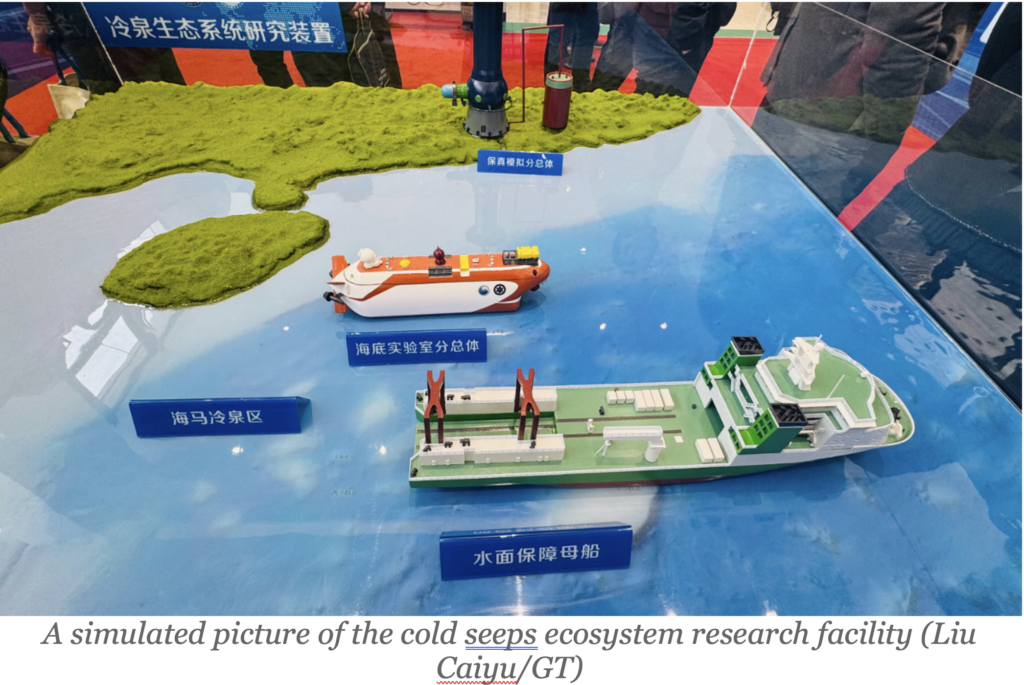http://en.people.cn/n3/2025/0228/c90000-20283138.html
A deep-sea research megaproject in Guangzhou, South China’s Guangdong Province, will in some years explore the origins of life in extreme deep-sea environments and the green development of deep-sea resources such as combustible ice.
Led by the CAS South China Sea Institute of Oceanology (SCSIO), the research facility operates at depths of 2,000 meters for up to 30 days.
The facility comprises three key components:
- a deep-sea laboratory
- an authentic simulation subsystem
- support and guarantee subsystems
It weighs 600 tons and will accommodate a crew of six.
Its mothership, with a displacement of 9,380 tons, is capable of deploying, retrieving, and providing operational support.
The entire project will take about five years to finish. The initial four years will focus on the engineering design and the physical construction of the facility. The final year will involve system testing, equipment calibration, and operational validation through marine trials to ensure functionality under real-world conditions.
The “cold seeps” facility is the first major national scientific and technological infrastructure combining both marine and land elements.”Cold seeps” refer to underwater areas where gases, such as methane, hydrogen sulfide, and carbon dioxide, seep from the seafloor into the ocean, driven by geological shifts or pressure changes. Often called “oases of the deep sea,” the cold seeps ecosystem refers to a unique ecosystem in the dark depths of the ocean where marine organisms utilize chemicals (such as methane and sulfates) seeping from the seabed as carbon sources and energy for chemosynthesis. This ecosystem thrives in an environment characterized by darkness, high pressure, and low oxygen levels. Cold seeps provide carbon sources and energy for chemosynthetic autotrophs, sustaining a community of cold seeps organisms that rely on these autotrophic bacteria as the foundation of the food chain, serving as primary producers. A diverse range of organisms, including tube worms, clams, mussels, crustaceans, polychaetes, as well as echinoderms like starfish and sea urchins, crabs, cold-water corals, and fish, are flourishing on the basis of it. To date, scientists have discovered over 600 species of organisms in cold seeps ecosystems.
Research on cold seeps and their ecosystem has been a focal point of international attention. In terms of climate change, methane gas from cold seeps areas is a significant source of greenhouse gases, which has the potential to become a commercial energy source in the future. The leakage of methane from these areas has a substantial impact on global climate and ecological environments, making their protection crucial. Furthermore, organisms found in cold seeps may have the ability to synthesize compounds that are important for biomedicine, offering immense scientific value. So far, scientists have identified more than 600 species in the cold seeps ecosystem, according to the institute.

